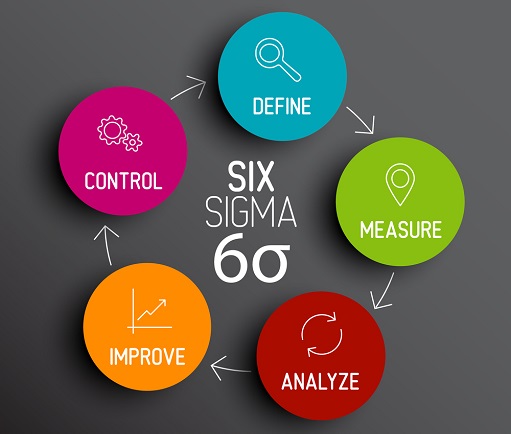
Usman Ghani (June 14, 2016)
Six Sigma is a methodology which was introduced in 1986 and focuses on enhancing quality by eliminating defects in any process. It involves gathering and analyzing data to improve processes in companies. Today, several companies apply six sigma so that business processes remain consistent, meeting customer needs. The aim is to reduce defects to no more than 3.4 per million. Six Sigma is divided into two methodologies, DMAIC (Define, Measure, Analyze, Improve and Control) and DMADV (Define, Measure, Analyze, Design and Verify). While the DMADV approach is commonly used for designing new products or process designs, DMAIC, Six Sigma’s primary methodology, essentially focuses on improving existing products and processes. This is especially important in the customer service industry because it allows you to reduce defects and ensure that an optimal level of performance is attained and reinforced in your business. Implementing it enhances efficiency, ensuring that all processes and practices are carried out in accordance with customer expectations.
Here are some insights on how Six Sigma’s DMAIC can help identify customer service issues and improve service experience.
The first step is to define all the issues that are being faced by your customers. Different techniques and tools can be used to determine the problems. Involve your customer service teams, define and allocate resources needed for identifying issues. Create a timeline of tasks to be undertaken in managing the issue and assign realistic deadlines for the completion of each activity. Also, don’t forget to align your project aims with customer requirements and expectations. Begin by asking yourself about how you plan to address the problem. For example, imagine a scenario in which a customer complains about slow service. In this case, the customer expects immediate service and support since the problem arose due to inefficiency on part of your organization. Hence, the agenda for your project plan should be to come up with a solution that eliminates the possibility of the same problem occurring in the future.
After defining the problem and its parameters, you need to gather data that is relevant to the scope of your project. Make a list of all the details associated with the problem and create a systematic roadmap for managing the issue. Identify the processes that led to the issue and recognize the areas which require improvement. All the relevant data needs to be collected which is related to the customer service problem. For instance, the nature and frequency of the issue and how many customers are impacted by it, all this information is vital.
This step requires you to conduct a root cause analysis of the customer service issue. Ask yourself: what were the circumstances or processes that led to a specific problem? Which department was directly or indirectly responsible for the problem, and how did the consequences cause inconvenience to customers? Did the problem occur as a result of an individual or collective action? Asking questions and analyzing the data extracted from them can reveal areas where change is required, thus enabling you to get the most effective results for your company. Also, while the Six Sigma requires the top management’s leadership in resolving the issue based on the root cause analysis, involving customer service teams in your organization is equally important, given that they frequently interact with clients on the frontline. Your team would be capable of looking at the issue from the customer’s perspective, thus making it easier for you to fix shortcomings.
Brainstorm possible solutions that can be used to tackle the issue and identify the one that would work best for your organization. At this point, you should implement an organization-wide test run of the change and ensure that all your teams are onboard with this. Ask your staff for their feedback regarding the change and take note of any deficiencies that may have risen during the implementation process. Staff should provide feedback based on the effectiveness of the solution and whether or not it aligns with customer requirements, satisfaction and your business goals. At this stage, you should be focusing on constantly improving customer experience. Focus and repeat all processes that have proved to lead to higher customer satisfaction.
Design variables and metrics that help you to keep track of your efforts in ensuring that customer service problems are eliminated or kept minimal at your company. In this case, you must make sure that issues are statistically insignificant. Develop controls to ensure that excellent service is practiced and reinforced on a company-wide basis. Improve your solutions and current processes to achieve continued success in addressing business inefficiencies. Also, invest in customer service trainings to ascertain that your staff’s performance consistently keeps pace with customer standards and expectations. This leads to a number of benefits such as controlled and measurable improvement within your organization, smoother processes and seamless customer experience.

Healthcare workers are entrusted with the great responsibility of caring for people. In order to continually offer comfort and care to people, there are certain skills that healthcare professionals need to master. Of course there are the obvious ones related...
Read More
Creative thinking is one of the most important and sought after soft skills that you need to acquire in an increasingly digital landscape of 2021 and beyond. Creative thinking skills are required in many different job roles to come up...
Read More
Sales are the backbone of any business and great salespeople are an asset for the company. Some people are naturally gifted in the art of persuasive communication and negotiation skills required to convince clients and effectively sell more. However, certain...
Read More